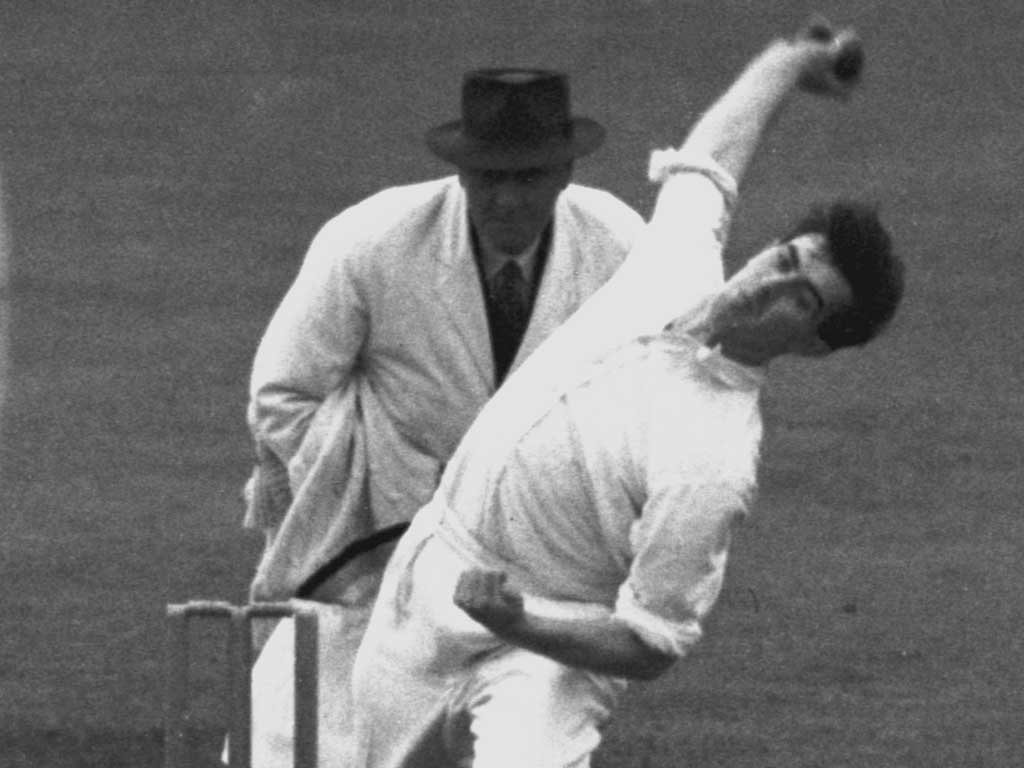On the Front Foot: Sky's the limit for the pundits as fixture congestion threatens

Your support helps us to tell the story
From reproductive rights to climate change to Big Tech, The Independent is on the ground when the story is developing. Whether it's investigating the financials of Elon Musk's pro-Trump PAC or producing our latest documentary, 'The A Word', which shines a light on the American women fighting for reproductive rights, we know how important it is to parse out the facts from the messaging.
At such a critical moment in US history, we need reporters on the ground. Your donation allows us to keep sending journalists to speak to both sides of the story.
The Independent is trusted by Americans across the entire political spectrum. And unlike many other quality news outlets, we choose not to lock Americans out of our reporting and analysis with paywalls. We believe quality journalism should be available to everyone, paid for by those who can afford it.
Your support makes all the difference.Part of the allure of big-time cricket is supposed to be that it has three formats.
The ICC constantly use it as a selling point, both to supporters and TV companies. "Ooh, look at us," they sometimes say, "we've got all these different types of game which nobody else has, so there." Or that is the gist.
The trouble is, it is difficult to know what is taking place where, when and above all why. Take next summer in England, the schedule for which has been announced. First there are some Test matches, which are followed by some one-day internationals and then some Twenty20s. After that, there are some more one-day internationals in the form of the Champions Trophy. Then come some more Tests, with another lot of Twenty20s after that and finally some one-day internationals.
At nine different grounds there will be seven Tests, four T20s and, depending on the format of the Champions Trophy, 23 one-day internationals. It seems too much. The other night on Sky Sports, when James Taylor was blitzing his way to a wonderful hundred in a CB40 match (that's another format, by the way), there was a concerned commentators' conversation about the plethora of cricket even this summer in the wake of Kevin Pietersen's retirement from ODIs and T20s.
If Sky, with their £260m rights deal with the ECB, think there is too much cricket then the ECB ought to start listening. Mind you, there may always have been too much, if not of the international variety. When Australia toured this country in 1972 they played 26 first-class matches (including five Tests and Lancashire twice) and 11 one-dayers. No one complained.
No reduction for DL method
Duckworth and Lewis, a cricketing double act to be bracketed with Hobbs and Sutcliffe and Trueman and Statham, is with us to stay. Their system of calculating target scores in reduced limited-overs matches, which no one understands but everybody accepts, had been under threat.
For 10 years, an Indian engineer, V Jayadevan, has been urging the ICC that his system, the VJD, is more accurate. The ICC first ruled that DL, the brainchild of the statisticians Frank Duckworth and Tony Lewis, was best eight years ago and they did so again last week, concluding "there was no evidence of any significant flaws in the DL method".
Indeed DL is more than a cricket system. It is part of the fabric of things now. A popular music combo named itself after the pair three years ago with a riproaring, eclectic album. And what other statisticians had a naughty BBC Radio 4 comedy sketch written about them?
The scene is a bedroom where a couple have been in the throes of passion. A man asks: "Was that good for you, darling?" A woman replies: "Fantastic this time, sweetheart." The man says: "Well darling, that was all down to the Duckworth Lewis method."
Trueman but a false dawn
There is another diamond jubilee on Tuesday. It will be 60 years since Fred Trueman began his Test career. Two days later, India, in their second innings, were reduced to 0 for 4, the worst start ever in Tests. Trueman had three of the wickets and had announced himself to the world.
"The crowd were stunned into silence as the drama unfolded before them," said the Wisden Almanack. By the end of the four-Test series, he had 29 wickets. England had no tour that winter but for the start of the next summer Trueman was omitted.
Times, you might say, have changed.
Tattoo little, too late
Kevin Pietersen's retirement from limited-overs cricket will not only reduce England's run-rate. The tattoo count will also go down significantly. Pietersen had three lions emblazoned on his arm in the days when he was still in love with one-day cricket.
With Andrew Flintoff not having been around for a while it will leave Jade Dernbach, a self-confessed devotee of body art, as the sole standard-bearer, at least on public display.
Join our commenting forum
Join thought-provoking conversations, follow other Independent readers and see their replies
Comments